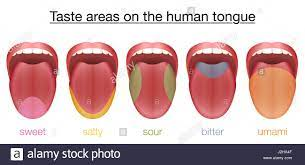Science of Taste
PKGhatak, MD
Gastronomy scientists held the view for a long time that humans have only salt, sweet, sour and bitter taste perceptions. A Japanese scientist, Kikunae Ikeda, in 1907 proved there is a 5th taste in humans. He called that Unami taste. He demonstrated meat, shellfish, fish, mushrooms, tomatoes, and vegetable proteins when simmered in water for a long time, produce an amino acid that triggers the Umami taste (in the west it is called the savoy test). That chemical is MSG (monosodium glutamate). MSG is commercially manufactured and used by the food industries worldwide. People of South Asian countries believed that Hot is an independent taste “(called Jahl by locals) but science rejected their claim till Vijay Lyall found receptors for Hot in the taste buds.
The tongue surface is covered with filiform papilla. These papillae contain TRPV (transient receptor potential vanilloid family) receptors. The primary function of it is to protect the tongue from hot temperatures and these receptors are also activated by capsaicin. Alcohol potentiates response and lowers the threshold for heat activation from 42 °C to 34 °C. Vijay Lyall and his colleague discovered modified TRPV1 receptors on Taste buds.
Menthol and mint give a cold sensation in the mouth due to the presence of TMPM8 protein which triggers cold receptors. In hot chili peppers, the presence of TRPV1 in capsaicin binds with hot receptors in the mouth. Black peppers contain Piperine molecules that also bind with the same TRPV1 receptors. The list is growing – recently calcium, dryness of food, fattiness, heartiness and numbness of food receptors have been identified.
The 2021 Nobel prize in medicine was awarded to Ardem Patapoutian and David Julius of California for their discovery of the molecular basis of the perception of hot, cold and mechanical force. With this Nobel prize award, all the skeptics holding the notion that only 5 tastes are perceived in humans, melted away.
The French chefs always knew alcoholic beverages magnify taste perception and some fine French restaurants serve a different type of wine, before bringing in the next course. If one orders desserts in a French restaurant, the waitress will bring a small dish of sorbet for cleansing the palate before bringing the gateau and the assortment of petites gateaux. Children love ice cream but many of them refuse to drink milk. That led to the discovery that cold multiplies the sweet sensation of sugar. If you do not believe it, just place a few fresh grapes in the refrigerator and when they are frozen, pop one or two in your mouth. And enjoy the explosion of sweet grapes inside the mouth.
That is not all. In Sanskrit it says – Ghranena Ardha Vojanam. ঘ্রাণেন অর্ধ ভোজনম । (smell of food imparts half of the pleasantness of eating). The same also works for visual, auditory and touch sensations on taste. In a simple sentence – The Taste of food is more than just the anatomy of Taste.
Now have a look at the Anatomy of Taste.
In the nineteenth century, two German scientists Greorg Meissner and Rudolf Wagner discovered taste buds among the papillae of the tongue. A taste bud is made up of tall taste cells, Gustatory cells, each cell is supplied with an afferent fiber of the 1st order neuron of the visceral chemosensory neuron of the Vagus nerve (nucleus tractus solitarius). The top of the cells ends in hair like microtubules and all of them are bunched together and appear at the opening of the taste bud. The taste producing molecules of food attach to the respective microtubules and the nerve impulse is generated and is conducted along the nerve to the sensory nucleus. The taste buds present at the back of the throat, tonsils and palate are innervated by the glossopharyngeal nerve and the rest of the path is shown in the diagram.
From the Vagus nucleus, the sensation reaches the ventroposterior nucleus of the Thalamus. The 3rd order neuron carries the information to the Taste area of the cerebral cortex.
Taste buds.
The revised taste bud types are 7, namely sweet, sour, bitter, salty, umami, cool and hot. An adult person has about 10,000 taste buds in the mouth; some have more and they become food super-critics, others have fewer and they will eat anything placed before them. A human child in utero develops taste buds and at birth, sweet and bitter taste buds are fully functional. In adults, a cell of the taste bud lives for about 10 days and is continuously replaced by new cells of the taste buds. As an example, all of us burned our tongues by hot coffee and remembered how the food tasted bland for a few days, then the normal taste returned. Most of the taste buds are present on the surface of the tongue, however, the entire mouth cavity has taste buds but density varies from place to place. In old age, the number of taste buds decreases to about 5,000.
The diagram below shows areas of the tongue with one dominant taste bud but not at the exclusion of other varieties.
From Left to right, sweet, salt, sour, bitter, and umami.
Taste center.
The insular cortex and inferior frontal gyrus are two parts of the taste center. Within the centers, there are neuronal groups engaged in association, connection with smell, touch, visual, tactile and emotional, hypothalamus, thalamus, Hippocampus and other areas of the brain. These interconnections are responsible for the development of memory of taste, food association with place and time, likes and dislikes of certain food in an individual.




